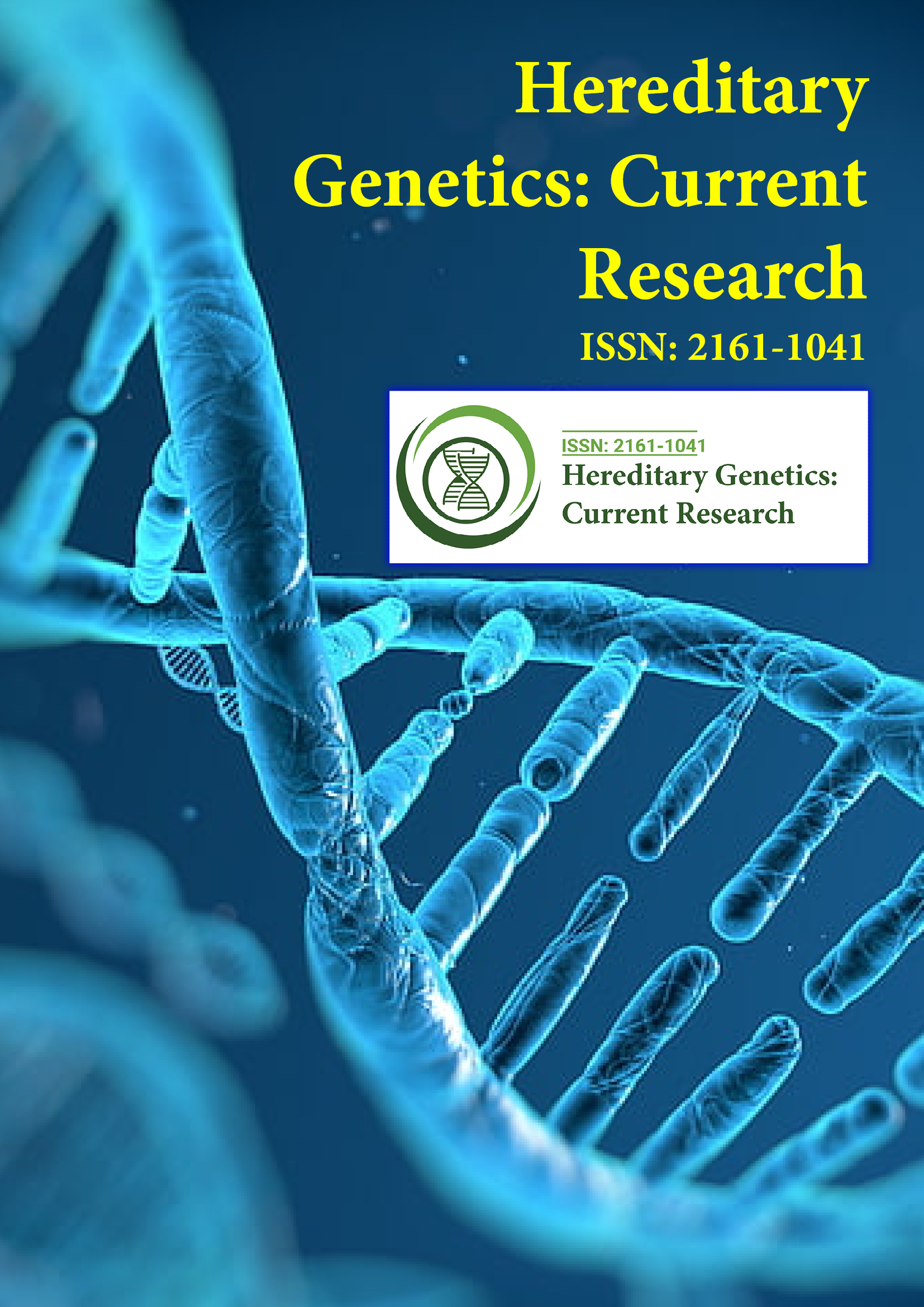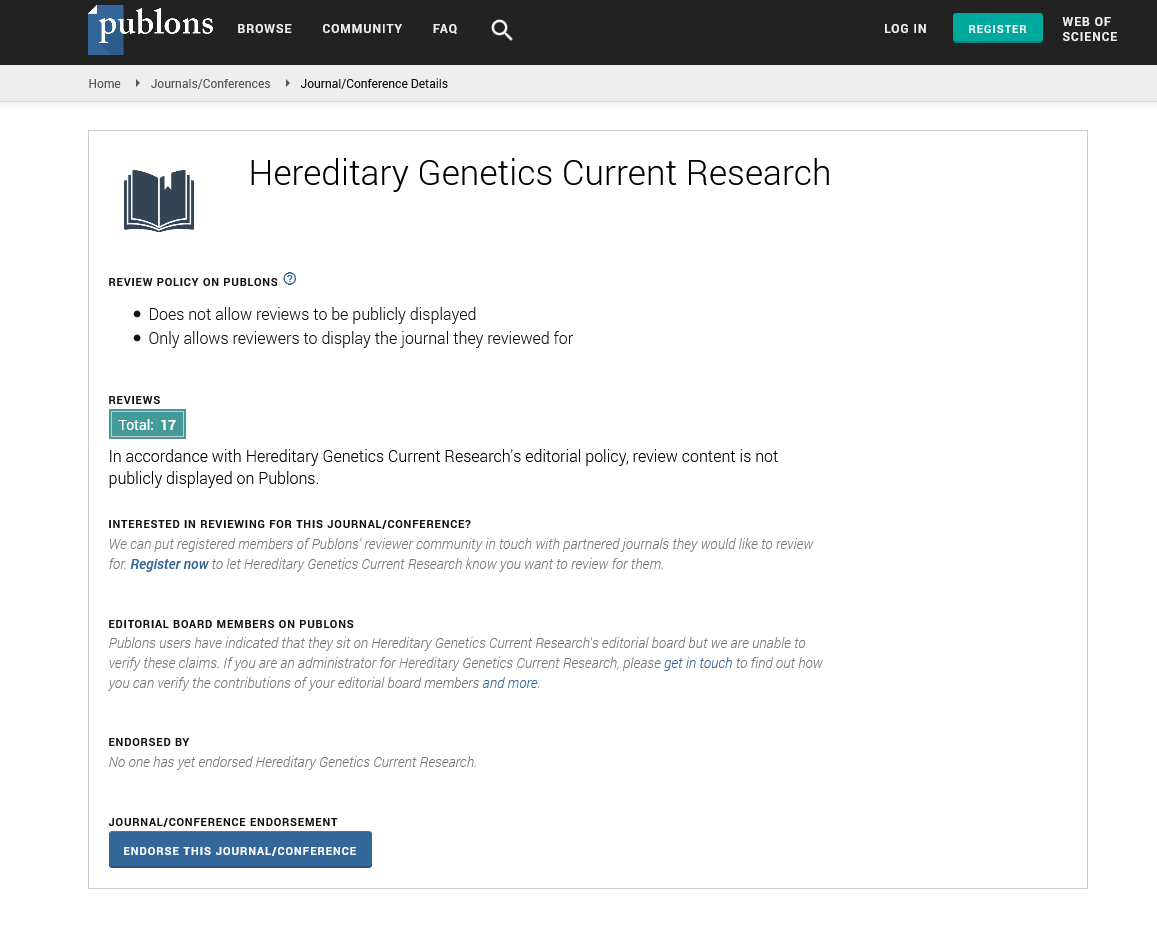Indexed In
- Open J Gate
- Genamics JournalSeek
- CiteFactor
- RefSeek
- Hamdard University
- EBSCO A-Z
- NSD - Norwegian Centre for Research Data
- OCLC- WorldCat
- Publons
- Geneva Foundation for Medical Education and Research
- Euro Pub
- Google Scholar
Useful Links
Share This Page
Journal Flyer

Open Access Journals
- Agri and Aquaculture
- Biochemistry
- Bioinformatics & Systems Biology
- Business & Management
- Chemistry
- Clinical Sciences
- Engineering
- Food & Nutrition
- General Science
- Genetics & Molecular Biology
- Immunology & Microbiology
- Medical Sciences
- Neuroscience & Psychology
- Nursing & Health Care
- Pharmaceutical Sciences
Commentary - (2021) Volume 10, Issue 6
A Brief note on Mitochondrial Inheritance
Katrin Deng*Received: 02-Nov-2021 Published: 23-Dec-2021, DOI: 10.35248/2161-1041.21.10.204
Description
A cell contains numerous mitochondria, and each mitochondrion contains dozens of copies of the mitochondrial genome. Mitochondria are organelles that play a critical role in numerous cellular functions such as energy-generating i.e., ATP production, cellular homeostasis, and apoptosis. Furthermore, the mitochondrial genome has a higher mutation rate (approximately 100 times higher) than the nuclear genome. This results in a heterogeneous population of mitochondrial DNA within the same cell and even within the same mitochondria. Therefore, mitochondria are considered heteroplasmic. When a cell divides, its mitochondria divide between the two daughter cells. However, the mitochondrial segregation process is random and much less organized than the highly precise process of nuclear chromosome segregation during mitosis. As a result, progeny cells receive similar, but not identical, copies of their mitochondrial DNA.
Why do mitochondria have such a high mutation rate? A nuclear gene called DNA Polymerase Gamma (POLG) encodes DNA polymerase, which is responsible for replicating the mitochondrial genome. The POLG protein consists of two domains: a catalytic domain that exhibits polymerase activity and an exonuclease domain that participates in the detection and elimination of DNA base pair mismatches that occur during DNA replication. A recent study suggests that mitochondria may have a nucleotide imbalance leading to lower POLG fidelity and higher rates of mitochondrial DNA mutation.
Mitochondrial inheritance
The inheritance of a trait encoded in the mitochondrial genome. Due to the peculiarities of mitochondria, mitochondrial inheritance does not follow the classic rules of genetics. People with mitochondrial disease can be men or women, but they are always related to the mother and no man with the disease can transmit it to his children. Mitochondria are normal structures or organelles in cells. They are located in the cytoplasm of the cell outside the nucleus. Mitochondria are responsible for producing energy. They consist of two sets of membranes, a smooth and continuous outer layer and an inner membrane that is arranged in tubules or in folds that form double plate-like membranes (ridges). In fact, the mitochondria are the main source of energy for the cell (thanks to the cytochrome enzymes of terminal electron transport and the enzymes of the citric acid cycle, the oxidation of fatty acids and oxidative phosphorylation). Mitochondria convert nutrients into energy and perform many other specialized tasks.
Each mitochondrion has a chromosome that is made up of DNA (mitochondrial DNA or mtDNA), but is otherwise very different from the more familiar chromosomes in the cell nucleus. The mitochondrial chromosome is much smaller. It is round (whereas the chromosomes in the nucleus are rodshaped). There are many copies of the mitochondrial chromosome in each cell (whereas there is usually only one set of chromosomes in the nucleus). Mitochondrial DNA contains 37 genes, which are essential for normal mitochondrial function. Many genetic diseases are related to changes in certain mitochondrial genes.
However, due to ethical controversies over mixing genetic material from three different individuals, most countries currently do not allow embryos created by mitochondrial replacement therapy to be carried to birth. In addition, the process is very complex and expensive. In this article we provide evidence of a paternal contribution of mtDNA in humans and that it is consistent with the control of the process by an autosomal dominant gene. These results open a new frontier in mtDNA genetic research, which could provide information on alternative mechanisms for the treatment of inherited mitochondrial diseases.
Citation: Deng K (2021) A Brief note on Mitochondrial Inheritance. Hereditary Genet. 10:204.
Copyright: © 2021 Deng K. This is an open access article distributed under the terms of the Creative Commons Attribution License, which permits unrestricted use, distribution, and reproduction in any medium, provided the original author and source are credited.

